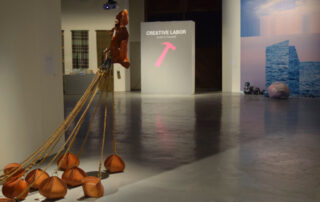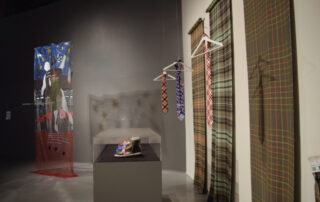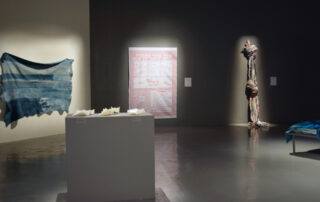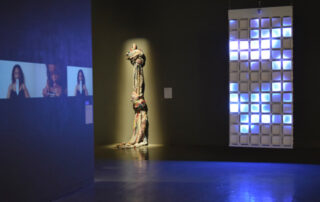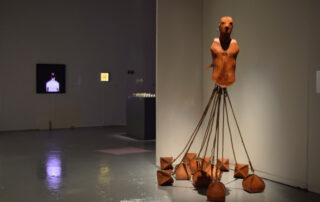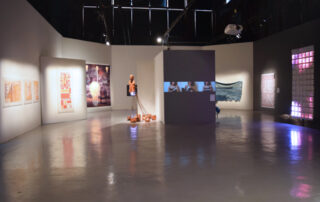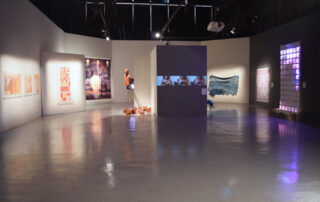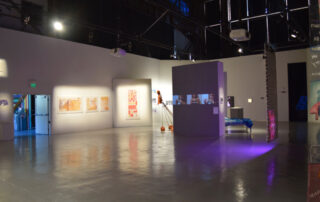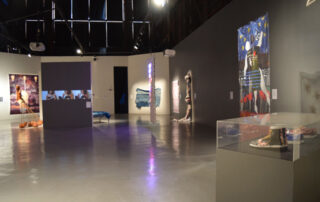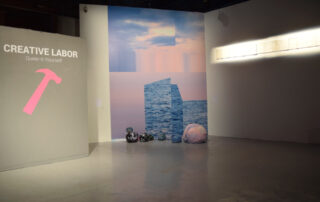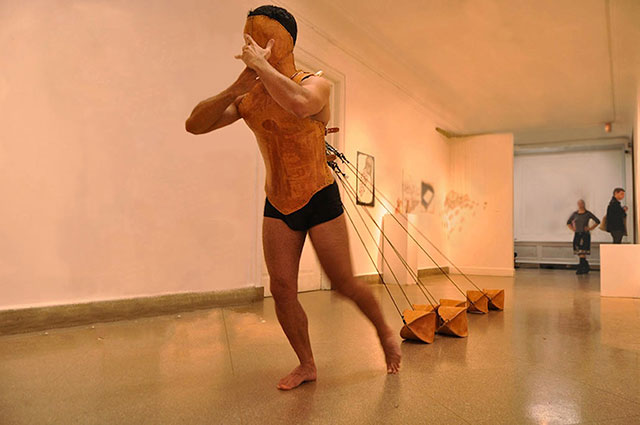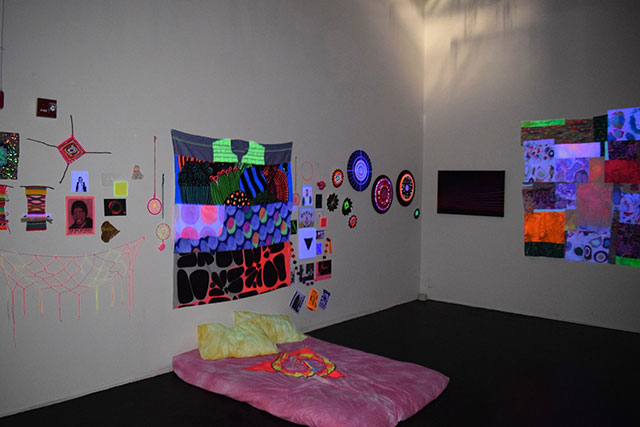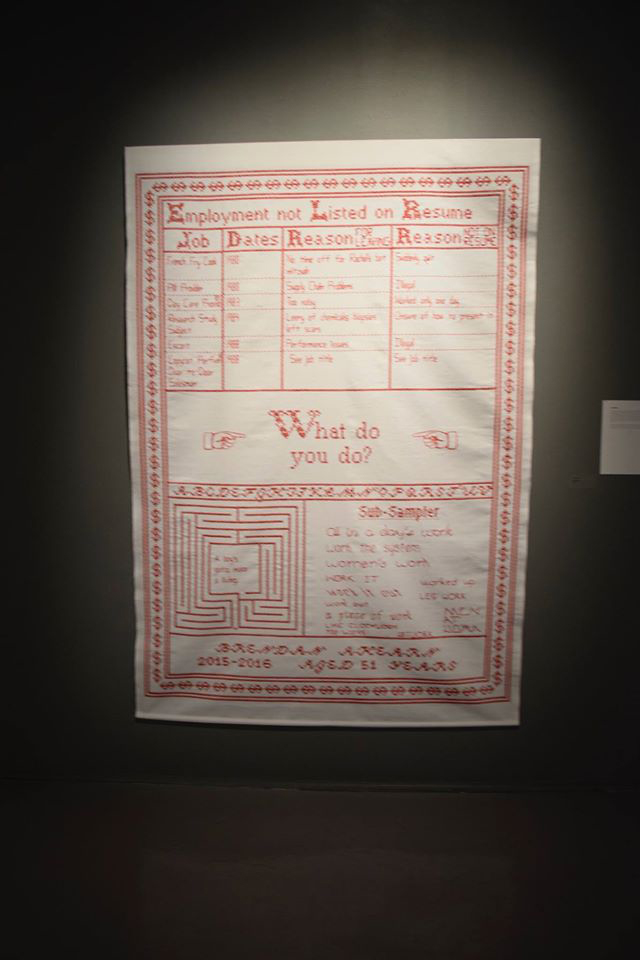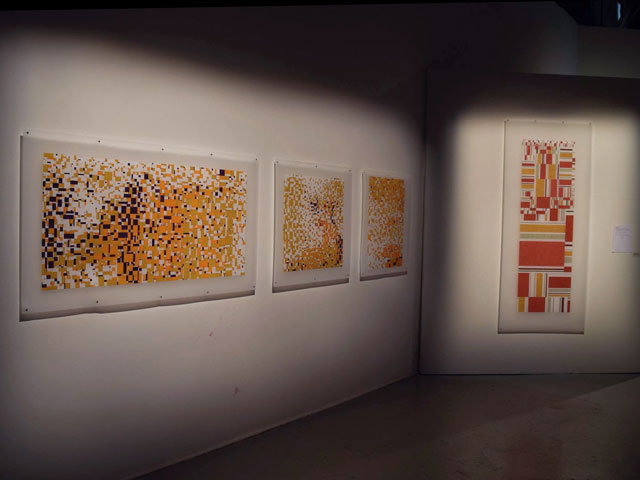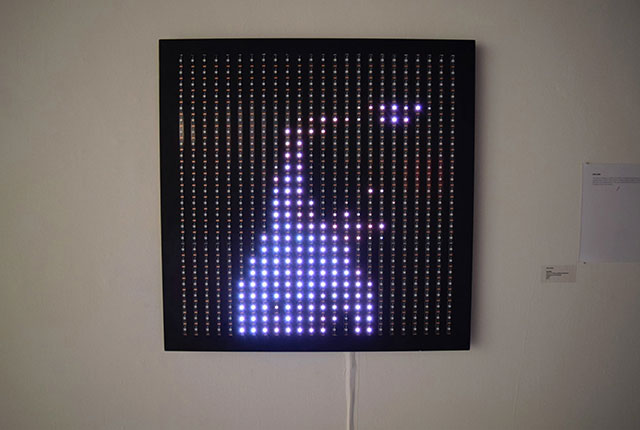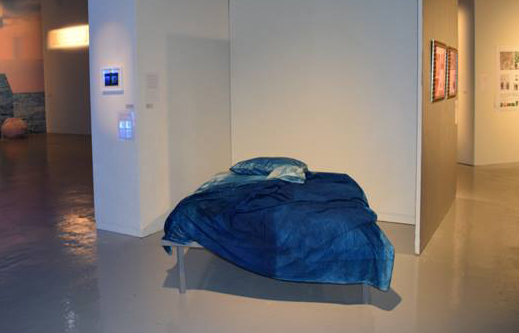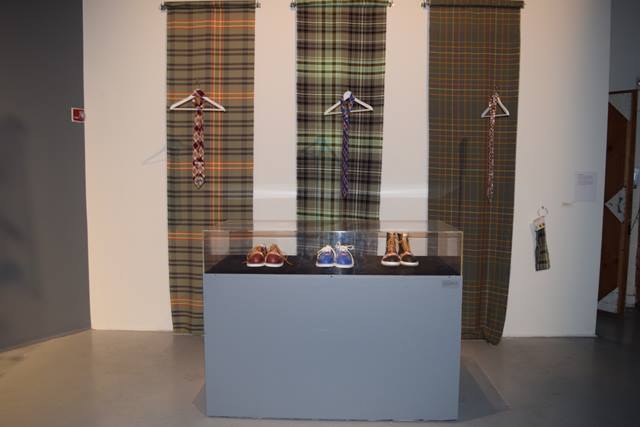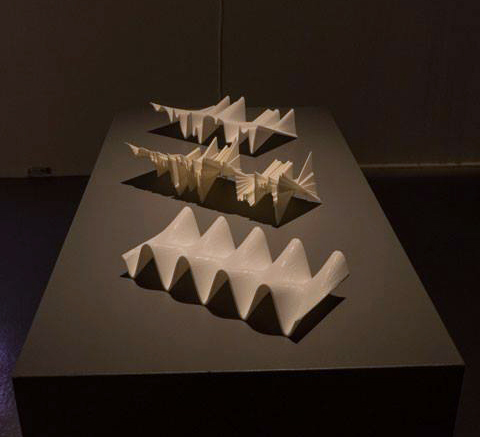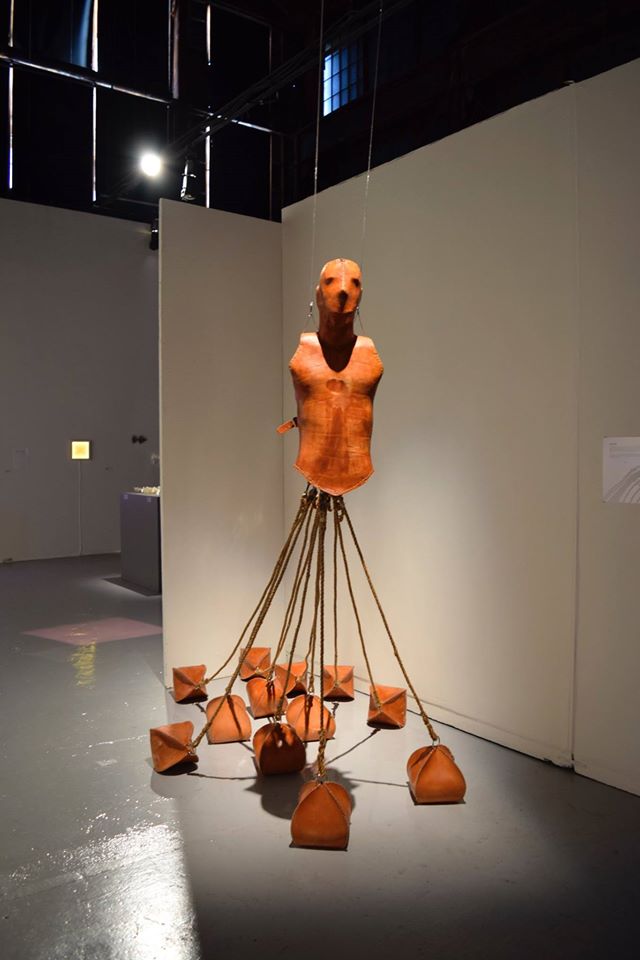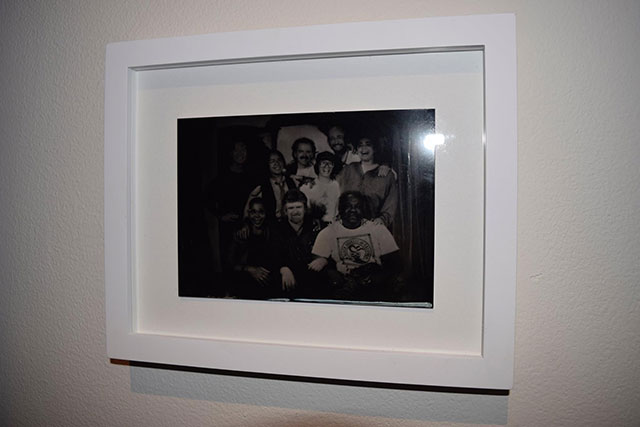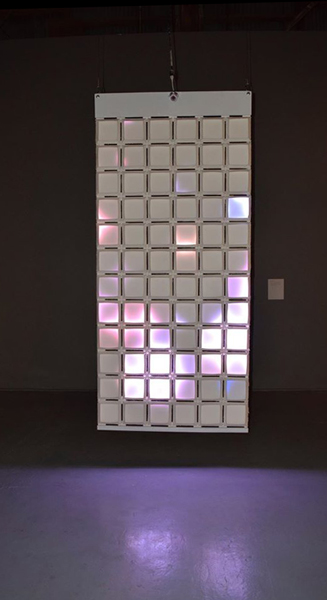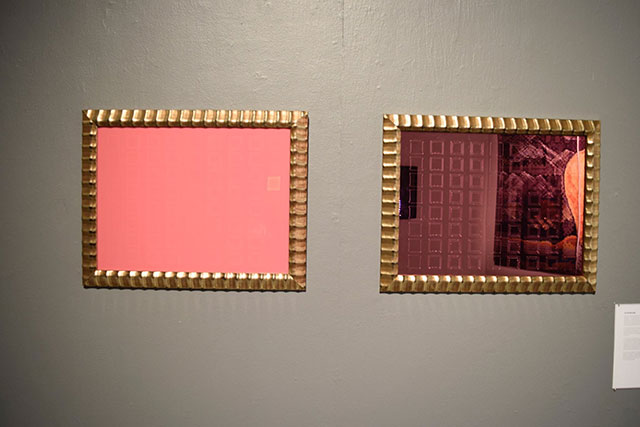Creative Labor
Creative Labor: Queer Visual Artists Working Group, is an organization of Feminist, Queer, Trans and People of Color artists and thinkers. We are committed to social and cultural equity and organize to promote social justice. We advance our goals through the creation and dissemination of Queer Visual Arts and Visual Culture.
QIY (Queer-It-Yourself) Expo and Faire
Exhibition Runs: June 5 – 24, 2016
SOMArts Cultural Center, San Francisco
Creative Labor: Queer-It-Yourself (QIY) Expo and Faire looks at material and immaterial labor that manifests itself in the work of Queer Bay Area Art and Artisan Culture. The exhibition focuses on the use traditional craft techniques in non-traditional ways, new media work that uses code and image processing to weave narrative and experimental structures across platforms, and the idea of the Craft, Maker, and Pop-Up Market places as alternative models for economic and aesthetic transactions.
Curated and Organized by Rudy Lemcke
ARTISTS IN THE EXHIBITION
EG Crichton
These two pieces were part of Archivi Migranti / surrogates from elsewhere, an exhibit that opened at the Museo d’Arte Moderna di Bologna last November. I was invited by the Italian LGBT organization and archive Il Cassero to bring my Migrating Archives project as part of their yearly Gender Bender Festival.
Migrating Archives creates connections between organizations around the world that collect and preserve LGBT historical materials. Starting in 2012, I invited a range of organizations to send me information about two of their archives representing individuals who have died. Using images, text and video messages from the archivists, my re-creations of these selected archives offer a glimpse into the collecting culture of each organization. In the form of a traveling exhibition, the archives of the dead are reinvented to travel across borders as delegates from their home institutions. Migrating Archives builds a lineage between grassroots efforts in Paris, LGBT collections at the British National Archive, a lesbian-owned restaurant and history museum in Manila, GALA in Johannesburg, Labrisz in Budapest, ALGA in Melbourne and Il Cassero in Bologna, among others.
For the Archivi Migranti / surrogates from elsewhere version of Migrating Archives, I reconnected with each archivist to determine what might serve as a metaphorical gift from their organization to our host, Il Cassero. After Azu Udogu’s Body Map is the gift I fabricated from GALA (Gay and Lesbian Memory in Action) in Johannesburg, South Africa, a wonderful activist archive organization that was founded in 1997. Azu Udogu was a transgender Nigerian immigrant to South Africa who fled oppressive conditions for a more progressive culture. In South Africa, she was finally able to live as a woman. At some point, before dying at a very young age, Azu created a large paper “body map” in a workshop. In my transparent interpretation, I have remapped her autobiographical narrative onto the outlines of her body.
There are Matters which are Difficult to Tell (conversations in the archive) is based on the actual words of archived individuals in the various archive collections. Using online voice actors from around the world, as well as local friends, I imagined the people I was “meeting” from different countries, cultures and time periods actually talking to each other.
Angie Wilson’s works emerge as meditations on creation and the cosmos, referencing natural phenomena as well as craft traditions. She explores inner and outer space, making tangible the deep and intrinsic connections we have to the universe.
Angie Wilson connects her hand to the invisible hands of anonymous makers through reconfiguring pre-industrial methods of making and she repurposes post-industrial materials and modes of being. Her research into the life and labor of rug weavers and industrial garment workers led her to weaving carpets with used and discarded work uniforms. She continues to engage rug-weaving methods. Wilson also uses thread to create light paintings – recontextualizing sacred objects in space.
Her work responds to events and social movements through abstract sculpture, locating historical events on an emotional axis. Currently she is working on site-specific installations, a series of sculptural carpets that reflect, glow and radiate color, and woven three-dimensional paintings with luminescent rope and yarn.
Bren Ahearn
I use textile crafts to explore masculinity’s conflicting messages, and I typically use the cross-stitch ABC sampler form to document how I’ve been educated to be a man in US society. (Years ago embroidery was part of a girl’s educational process, and during times when girls were not afforded a formal education, girls actually learned the ABCs by stitching them onto cloth. These embroidery samplers demonstrated a girl’s skill and the fact that she was of the leisure class, among other things.)
In my latest series of cross-stitch samplers, I recall actual experiences when I exhibited risky behavior, and I document a violent parallel history in which I was not so lucky. Additionally, I am exploring my work history.
Carlo Arbruzzee
By processing information from the US Census, these paintings translate demographic data into visual form. Each color, including white, represents one of the 7 ethnic groups as defined by the government census. Each piece maps the quantities and locations of ethnic groups within the geographic area.
(State of California: 1 square inch = 20,000 residents)
(Bay Area Counties: 1 square inch = 500 residents)
All information is from the US Census Bureau
*This project is made possible with support from the de Young Artist Studio program and the Institute of Museum and Library Services.
Colbe Roper
Looking at queer culture and histories of San Francisco I erase Drummer Magazine covers with silver polish, and use hand embroidery on leather, a traditional kink material, to speak of the forgetting and erasure of histories.
Debra Walker
This work documents a few of the pieces Walker is doing with Google in San Francisco.
The actual images are digital painting in a variety of applications of the iPad and Photoshop. Walker creates the images and then they are printed on wallpaper material and installed on the walls, doors and ceiling of elevator lobbies at the Google offices at 1 Market Street.
Walker has created 12 images for 12 lobbies.
The large hanging is a portion of a piece representing the entrepreneurial spirit of SOMA (floor 16) and the expansive creativity that has always been part of this neighborhood and San Francisco….pioneering individuals in art, entertainment, tech, theater, politics, design……with bright ideas. Ideas that push boundaries and rewrite, enlighten and emblazon movements. Movements that sprout here and change the world.
Evie Leder
This work is made as a gift for my father, a closeted homosexual who passed away in 2003. It’s the first in a series called “Kaddish”, dealing with loss and remembrance. This work was funded in part by the San Francisco Arts Commission.
Indira Allegra
The word text is rooted in the Latin verb texere, which means ‘to weave’. I am a writer and performance artist thinking through craft, generating texts that exist as woven objects and time-based works. By performing craft processes, I explore alternate modes by which documentation can occur. By securing warp threads to my teeth in an oral loom, the act of speaking about disability not visible to others creates a woven document – proof of the substance of my word.
Jamee Crusan’s interests lie in questions surrounding the “truth” of love within a media dominated society. In a time where love is becoming more of a spectacle and disposable, how can you know if it really exists?
Using life events as an inspiration for work, Crusan uses media ranging from video, installation, photography and sculpture. The diaristic tone within the work allows for viewers to identify with the troubles of traumatic relationship breakdowns, unavoidable melancholy and the nonsensical nature of it all.
Crusan puts contemporary takes on love and desire, gender, queer exhaustion, astrology and the metaphysical in conversation with the traces and marks that a vulnerable, intimate experience leaves on those involved.
If it doesn’t scare us even a little bit, then it lacks the ability to be that once in a lifetime opportunity to change our lives for the better. It is within the realms of loss that a collective “we” can be found. Loss is something we have all experienced at one time or another in many different forms. We are attached to others, to our bodies and exposed to each other and at risk for losing these attachments.
Jeremy Chase Sanders
I weave “queer plaids” that contain words coded into the patterns. I experience synesthesia, which causes me to see a certain color associated with every letter of the alphabet. I match threads to the colors I see in language and weave cloth with coded text. I use this process to elucidate the subtle hierarchies embedded in the sartorial narratives in the fabrics we wear and use everyday.
Everything I make is woven by hand, though I strive to emulate the quality of industrial textile design on both form and execution. I aim to challenge people’s assumptions about how things are made and by whom. The “disconnect” many viewers experience between the product and the producer illuminates a larger blindness/ignorance between consumers and manufacturers. In my view, the average Western consumer has been largely disenfranchised from the production of the goods on which we depend every day.
Kadet Kuhne
Taking form in 3D printing, video, installation, sound, interactivity, and 2D prints, I generate synthetic stimuli as an investigation of subjectivity through systems of control and technological mediation. With a preoccupation of what constitutes “consciousness,” I aim to prompt visceral, even pre-verbal emotional and physical responses to the invisible forces of particles and vibration that construct all matter. Image and sound physically interact with our bodies’ molecules and stimulate neurological responses. I am interested in the nerve stimulus that causes our initial physical reactions, and in transforming these reactions into immersive works.
My interest in making visible the invisible phenomenon of matter is manifested into form as 3D prints which are based on the architecture of sound waves. Sine represents destructive interference as it relates to audio, when two waves cancel each other out resulting in silence, and Overlap shows the interference and phase difference between two spherical waves. In Dependent Origination and Perceived Limitations, waveforms of spoken words are phase shifted, or inverted, to create cancellation, rendering the perceived sound inaudible. This cancellation brings into consideration the subjective nature of thought and aims to question the solidity of language. The words and phrases chosen for these models are themes that reflect the conceptual underpinnings of my videos and installations.
From a long-standing tradition of avant-garde filmmaking and improvisational music composition, I see my video and sound works as an extension of experimental practice in an age of hyper-communication and digital saturation. To openly expose the use of technology in my practice, I employ fragmented, jump-cut editing down to single frames, and amplify evidence of sonic detritus such as digital clicks and static. Comprised of intervals, disjunctions and suspensions of space-time, the situations presented in my experiential narratives attempt to capture, play and delay—from anxiety to resolve. Between pain, pleasure, the erotic, and the political, this tension morphs into another state, imbued with textures of self-imposed and societal boundaries and bondages. The simultaneous themes of constraint and liberation pose questions about personal power—how much we give to others and how much is taken. I hope to open for the individual viewer an expanded sense of the possibilities and realities of their own bodily existence through a series of physically and emotionally sympathetic responses.
In my own experience as a contemporary human, I have noticed a fundamental disconnection between mind and body, stemming from the often insufficient dialectical materialism of western philosophy which has informed and will continue to inform our being in the world: the most recent incarnation of which is the stripped down existence in a digital landscape. In my art I seek to create intimately personal connections with viewers through mobilizing many of the digital means which have facilitated disconnection in the first place.
Lorenzo Cardim
The Harbinger, whether a person or thing, is the sign of an impending event. The performance symbolizes the messenger shedding his skin. It highlights the performer’s desire to move forward, no matter what force pulls backwards; the desire to contradict the laws of motion through passion.
In the two-hour durational performance, the viewers were allowed to participate by attaching or removing 300 hundred pounds in weights onto the leather carapace.
Mia Nakano is a photographer, videographer, editor, web-designer, teacher, consultant, printer, writer, and social change maker based out of Oakland, CA. She honed her skills working on projects in China, Japan, Nepal, and the US. Her work can be found in numerous print and web publications, along with contributions to countless community and non-profit organizations.
The photo of the founding board members of the Queer Cultural Center was taken by Freddie Niem. (Left to Right, Upper) Freddie Niem, Osa Hidalgo-de la Riva, Rudy Lemcke, Lenore Chinn, Greg Day, Pam Peniston.(Left to Right, Lower) Adrienne Fuzee, Jeff Jones, Blackberri, and (not shown) Carol Stuart.
Micah Elizabeth Scott
Ecstatic Epiphany is a human-scale window into an imaginary space.
This piece is for anyone in the gallery to watch and control. Walking past it, your movement is amplified into a shift in perspective. Sometimes this is a passive action, other times it can lead to a dramatic change as chaos unfolds in the generative algorithms. The choreography of this mathematical world forms a continuous cyclic narrative of creation, depression, agency, and rebirth. Each moment is unique, echoed but never repeated.
Ramekon O’Arwisters
With Many Stories 2013 – 16 is an ongoing project of Crochet Jams, the social practice of Ramekon O’Arwisters. Crochet Jams engage the public to think differently about the role of art within community and the power of art within society. Crochet Jam—a public, art-making event that’s embracing and inclusive, with no attempt made to dictate the creative process nor judge the finished project—is meditative, liberating, and empowering.
Tim Roseborough
Queer people are drawn to the edges and peripheries of a society because — in some form or another — we are always running. Queer people run to avoid being trampled by the misunderstanding and sometimes unkind masses, to evade being drowned out in the din of stifling normality, and to shield themselves from losing a sense of freedom and distinctiveness in the homogenizing center.
For some of those who identify as Queer, technological culture can offer an outlet for expression and experimentation that has not yet been touched by the majorities of humanity. The technological sphere is a place in which minor utopias, however short-lived, can be created and nurtured.
In my efforts to discover a new sphere in which to create art, away from the crowded realms of traditional artistic mediums, I look to technology. For this show, I utilized a laser cutting system to etch the phrase, “I’m not gay, but you are” in a diptych of colored and mirrored acrylic. I am interested in confronting the viewer with the relative strengths and weaknesses of labels such as “Queer” and “Gay,” as they are used to categorize and segregate humans from one another.
The phrase is etched in Englyph: a font and writing system I have created. Englyph is comprehensible within the group of the learned, and abstract to those outside the circle of understanding, mirroring the play of marginality and inclusion that Queer subcultures have practiced throughout the ages.
Torreya Cummings
This work was made while at work—Cummings diverted waste material from museum exhibit graphics production into sculptural objects and other-than-intended installation material. These “thefts” of time and labor rescued, at least temporarily, materials that were unfit for their original task, but have their own compelling visual qualities.

